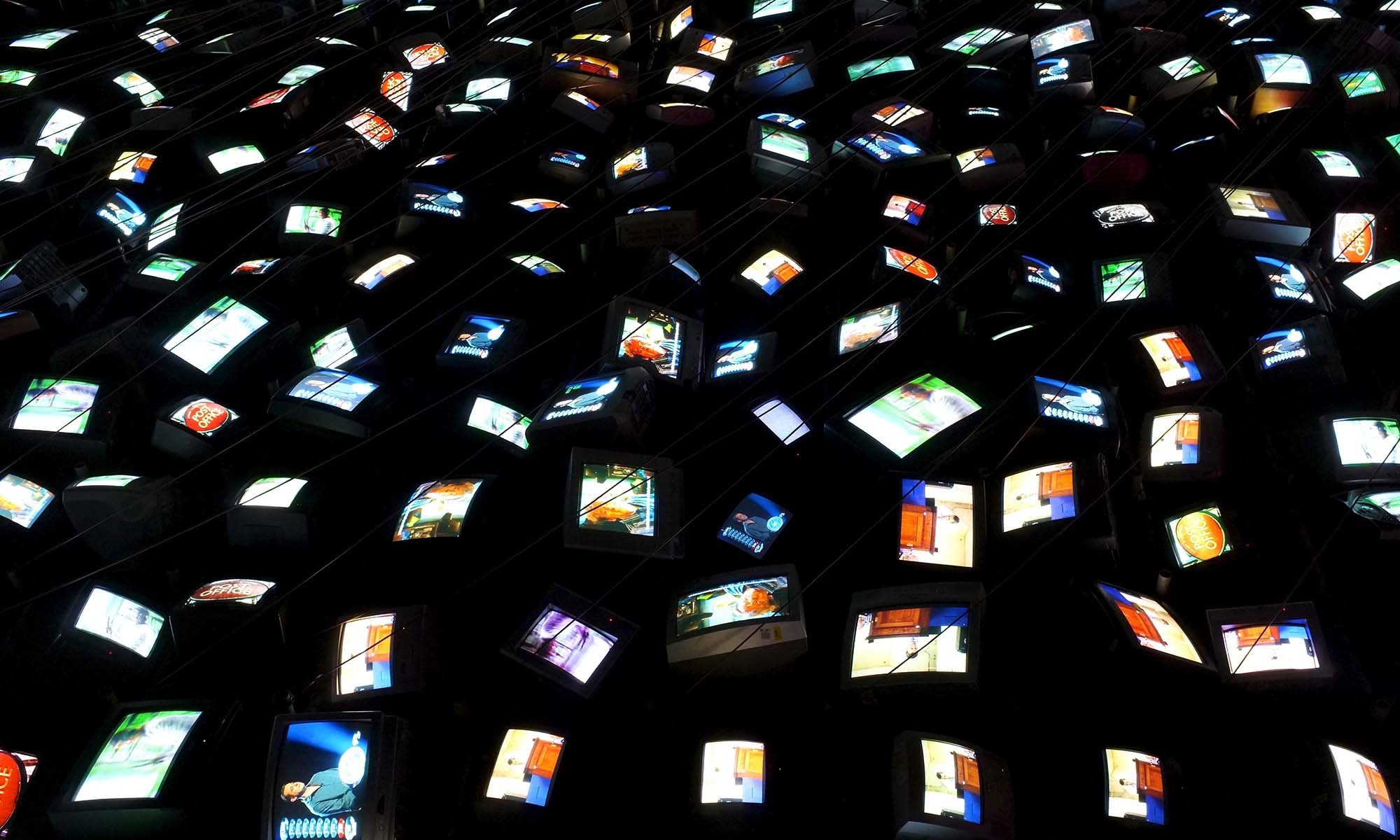RE_EXHIBIT 2
I Am Enchanted and I See
An exhibition by Cinzia Cremona
A new video commission in response to Tamara Krikorian’s Vanitas (1976) in the REWIND Collection.
10 November – 15 December 2023
I am Enchanted and I See (2023) responds to Krikorian’s pioneering artwork with a 21st century perspective on issues of gendered representation, screen mediation, and narcissism. The work makes the direction of the gaze explicit by implicating the audience as the eyes of the artist shift between her own reflection, the reflection of the lens, and phone lens itself.
The audience is implicated as the eyes shift between reflection, phone screen, mirror, and phone lens. Looking straight into the lens creates a direct line between the eye of the artist and the eye of the viewer – a performative eye contact.
Cinzia Cremona, 2023
Dr Cinzia Cremona is an artist and researcher working with video, performance and digital technologies. She investigates the mediated interpersonal relationships that emerge via screens and digital platforms. Her works have been exhibited in Australia, Europe, China, the USA, Russia, and Japan. She is a Casual Academic at University of Sydney, a Visiting Fellow at Macquarie University in Sydney, part of VISOR (Virtual and Interactive Simulations of Reality), and a member of the research cluster Critical Practice based at University of the Arts, London.
Tamara Krikorian was an influential artist of the 1970’s, and one of the first female artists in the UK to work with video. She was a founding member of London Video Arts, and instigated collaborative shows of artists’ work, including the first exhibition of video in Scotland, Video Towards Defining an Aesthetic at the Third Eye, Glasgow in 1976. She organised conferences and art forums, and wrote a number of key texts during the early period.
Krikorian’s work was complex in its layering of meanings, and lyrical, often exploring the blurred edges between representation and the real; the static and the moving, and her ambient electronic installations explored technological landscapes as well as the recorded images of landscape. She was an influential teacher at Maidstone and Newcastle, later living in Wales, where she ran Art Work Wales.
Biography amended from a tribute to the artist by the Arts Council of Wales and texts by J. Hatfield.
We would like to thank Ivor Davies for the kind permission to show Tamara Krikorian’s Vanitas.
Tamara Krikorian’s Vanitas is a pioneering video artwork that explores key themes and elements of early video art and feminism in the 70s: the metaphor of the mirror (with its traditional symbolism in painting), notion of identity and self-portrait, the relationship with Broadcast TV and the famous narcissistic element in the relationship with the viewer as theorised by Rosalind Krauss.
In the video, the camera frames the artist and an oval mirror reflecting a still life with vanitas and a TV monitor. The TV broadcast is interrupted by a video featuring Krikorian with an oval mirror reflecting the back of the artist’s head and the monitor in which the artist speaks. In these interruptions, the artist explains how she conceived the work and her research about still life, and specifically the vanitas and the artist self-portrait. Krikorian’s interruptions, in some sense, evoke the idea of what Stephen Patridge has defined as an artists’ TV Intervention: an artist’s piece that breaks the flux of normal broadcasting without the broadcaster’s mediation. In her interludes, Krikorian explains that she drew inspiration from Nicolas Tournier’s An Allegory of Justice and Vanity (1623–24, Oxford, Ashmolean Museum). Her analysis then focuses on some renowned pieces including David Bailly’s Vanitas Still-life with a Portrait of a Young Painter (1651), where the artist is surrounded by his works and symbols of vanitas. In this case, as noted by Krikorian, the self-portrait becomes the subject of the vanitas. This notion resonates with the very concept of the video itself.
Interestingly, the silent Krikorian in the foreground assumes a very reflective pose of melancholic meditation on the ephemerality of life. While in contrast, the Krikorian within the TV set is looking to the camera, addressing the audience (although her face cannot be seen clearly due to the low quality of the image), replicating the communicative strategy of the TV presenter. Her voice is mediated by the loudspeaker, creating a sound equivalent of the mise en abyme. Krikorian remarked that Vanitas is a ‘self- portrait of the artist and at the same time an allegory of the ephemeral nature of television’¹ . In this quote, the artist underlines how the video explores two traditional artistic genres – the portrait and the still life with vanitas – of which the TV has become part, implying its transitory nature. Here, the artist employs some fundamental topoi of both genres: the portrait and self-portrait (the mirror and the mise en abyme) and the still life with vanitas (once again the mirror, the candle – usually extinguished, the fruit, the glass and wine as Eucharistic symbols). The inclusion of these elements and the words spoken in her interventions engage directly with art history, so that Krikorian positions herself in its canon, and indirectly – once again – encompasses the concept of the recognition of women artists.
A key element in Vanitas and many other pioneering videos of the time (including for example Elaine Shemilt’s Doppelganger, 1979-81, or Klára Kuchta’s Etre blonde c’est la perfection [Being Blonde is Perfection], 1980, or Marianne Heske, A Phrenological Self-portrait, 1977) is the mirror that was used as a powerful metaphor also in several early theoretical essays. German art historian and curator Wulf Herzogenrath for example described ‘Video as a mirror’ as one of the three artistic ways to use video in his classification. Probably this metaphor was inspired by the instant feedback provided by video. Artists could see themselves on the video monitor whilst videotaping and the video was available immediately after the shoot. The monitor could generate an instant double of the artist that could play as an interlocutor or an antagonist; and recording more than once on the same tape was also possible in order to make multiple ephemeral ‘doppelgängers’. The viewers could see their own reflection in the mirror glass of the monitor on which the work was displayed (at the time projections were still rare).
The mirror-metaphor was central in Rosalind Krauss’ renowned essay about video, The Aesthetics of Narcissism, from 1976². Krauss states that ‘unlike the visual arts, video is capable of recording and transmitting at the same time – producing instant feedback. The body [the human body] is therefore, as it were, centred between two machines that are the opening and closing of a parenthesis. The first of these is the camera; the second is the monitor, which re-projects the performer’s image with the immediacy of a mirror.’ Proceeding from an analysis of Vito Acconci’s Centers, Krauss linked this loop to a narcissistic quality of video, although at the end of her piece she mitigates this assertion. Although her paper provided key elements to analyse video at the time and still partially provides avenues for today, we can consider its main point – the narcissistic nature of video, to be completely surpassed. In 2003, Michael Rush challenged this interpretation suggesting, very interestingly, that Acconci was instead addressing himself to the invisible – to the audience beyond the camera. Following from Krauss’ essay, in Sexy Lies in Videotapes (2003), Anja Osswald highlighted that the metaphor of video-as-mirror is not completely accurate. Video doesn’t offer a reversed image, but a double, so the ‘other’ breaks the narcissistic loop. Ultimately, video for Osswald, the ‘electronic mirror’ is ‘rather the reflection of the self – reflection’.³
Interestingly enough, both Osswald and Krauss agree on the introspective function of video⁴. This element might suggest that the camera beyond its physical representation, in some way reconnects the electronic mirror to the spiritual interpretation of the mirror – as a symbol of the divine and a tool to reflect and capture spiritual essence of things (Saint Paul, 2 Cor).
In her response to Krikorian’s Vanitas, and drawing from the abovementioned theory, Cremona explores this triangulation among the mirror, the camera and the performer – leaving us, the viewer, in a constant perusal of the shot. Moving the gaze from the performer to the mirror, and back from the mirror to the performer, we try to follow her gaze and the silent dialogue between the body and its reflection that seduces us and draws us into the image. As we are aware of the glowing surface of our screen and the reflecting mirror, both create for us a limit, a barrier between the body and its reflection, between us and her, between human and video.
(Laura Leuzzi, 2023)
¹ Text by Tamara Krikorian dated 1978, REWIND Archive, DJCAD, University of Dundee, TKR053. Available here.
² Rosalind Krauss, ‘The Aesthetics of Narcissism’, October, v. 1, Spring, 1976.
³ Helen Westgeest, Video Art Theory: A Comparative Approach (Malden, MA: Wiley Blackwell, 2016), p. 55.
⁴ Ibidem 56.


